Abstract
A statistical model has been proposed in an attempt to integrate coincidental (or synchronous) diagnoses of multiple primary cancers into a general method of analysis. In the context of population-based surveys, such diagnoses form an integral part of the pattern of incidence within the population. Because of clinical surveillance, the diagnosis of subsequent tumours may be advanced in time in comparison with a first primary diagnosis. The model has been used to predict the altered pattern of diagnosis in order to adjust the value of expected numbers. Data from a previously reported survey of bilateral breast cancer have been used to illustrate the model. Analysis in terms of the model showed a 2.6-fold increase in risk for a second primary tumour in the contralateral breast in a series of nearly 22,000 breast-cancer patients. The corresponding risks for 3 main age-ranges (at the time of diagnosis of the first primary) were 5.3 (age 15-44), 3.3 (45-49) and 1.5 (60+). In addition, a maximal risk of 5.0-fold was observed in the series as a whole during the third year after the diagnosis of the first primary.
Full text
PDF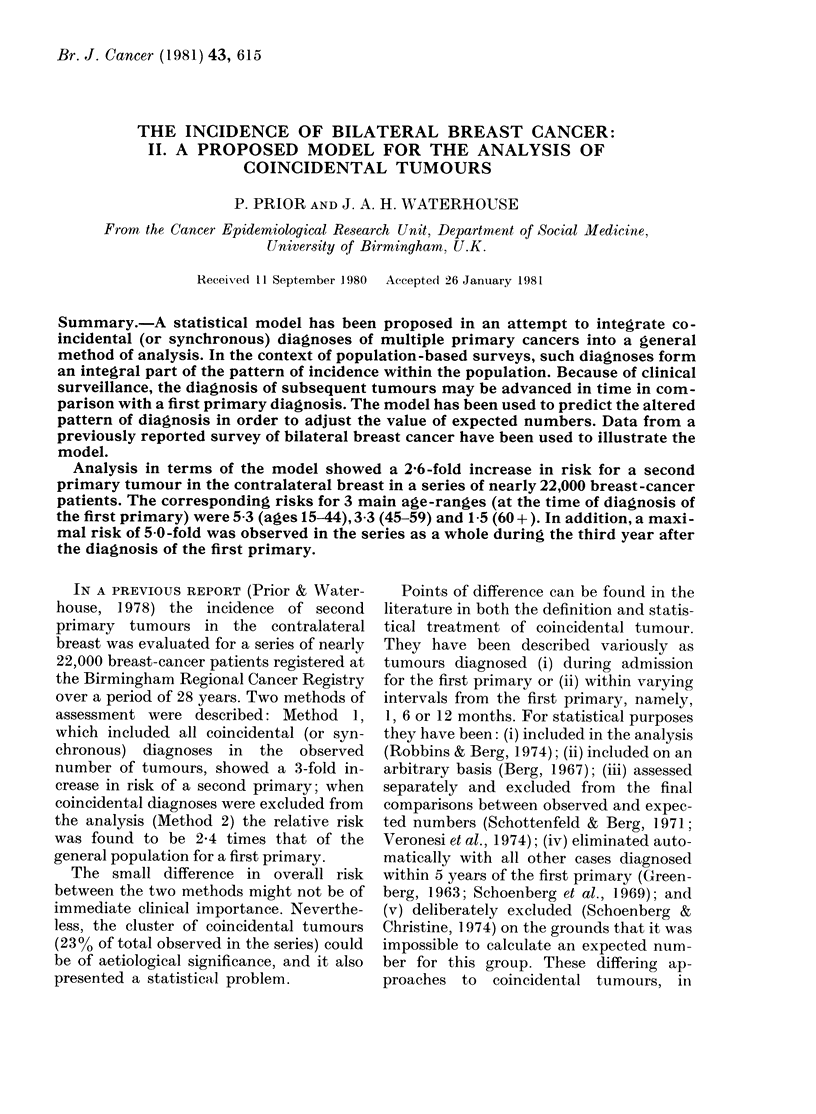
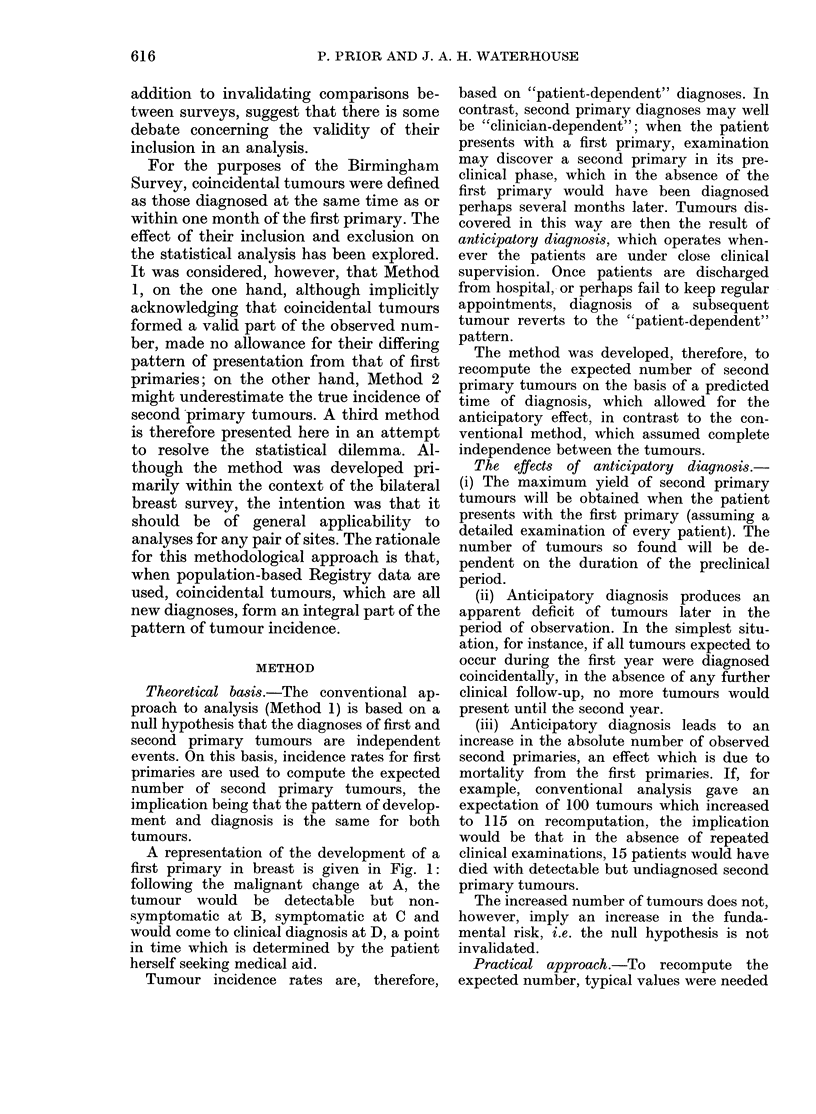
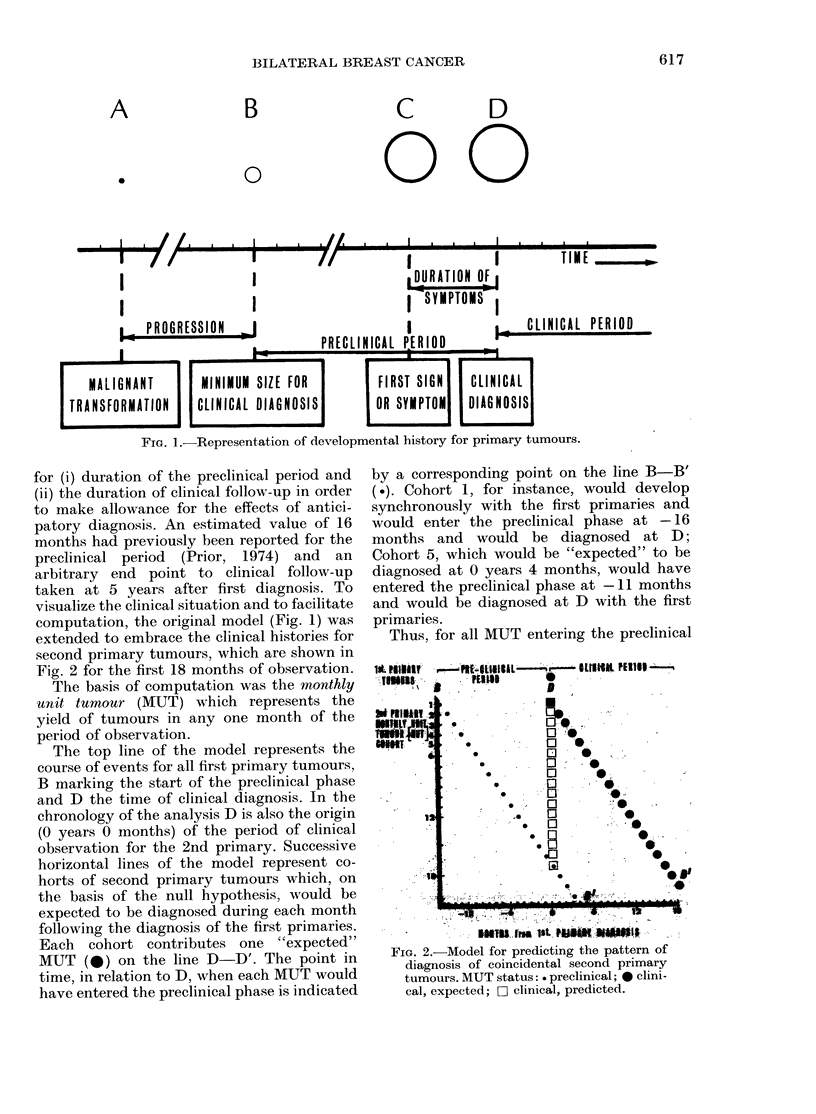
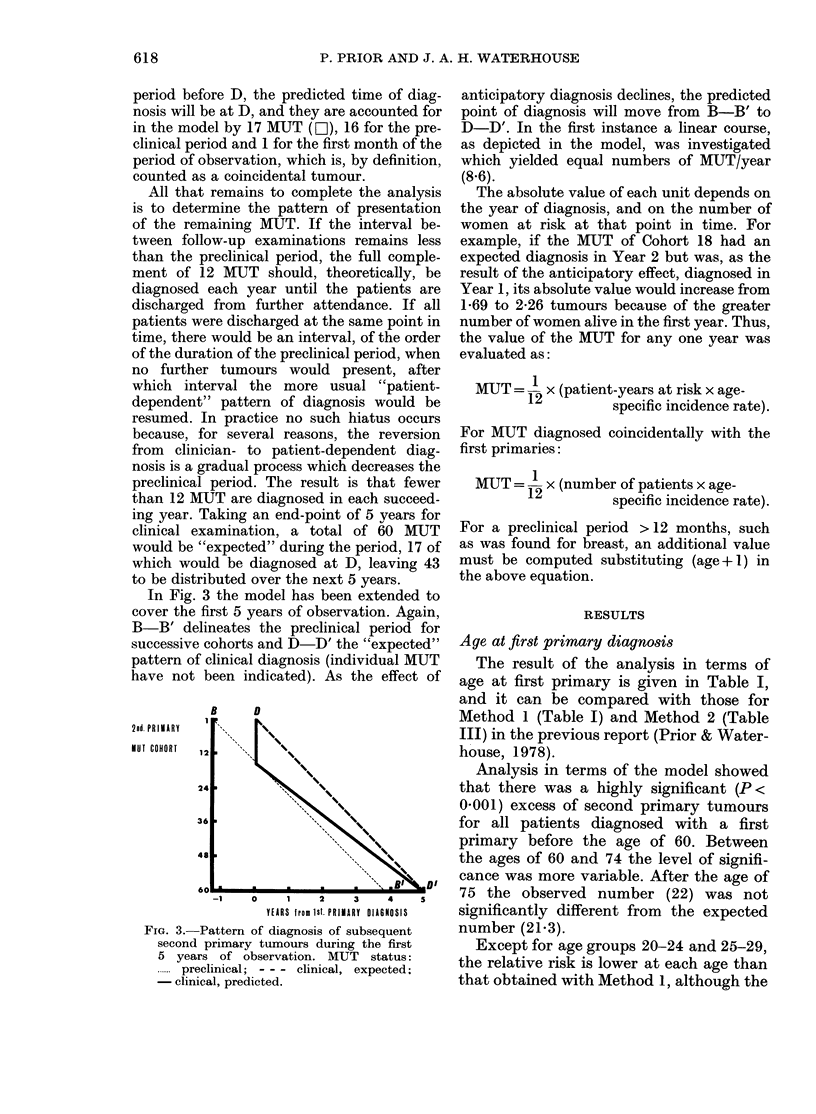
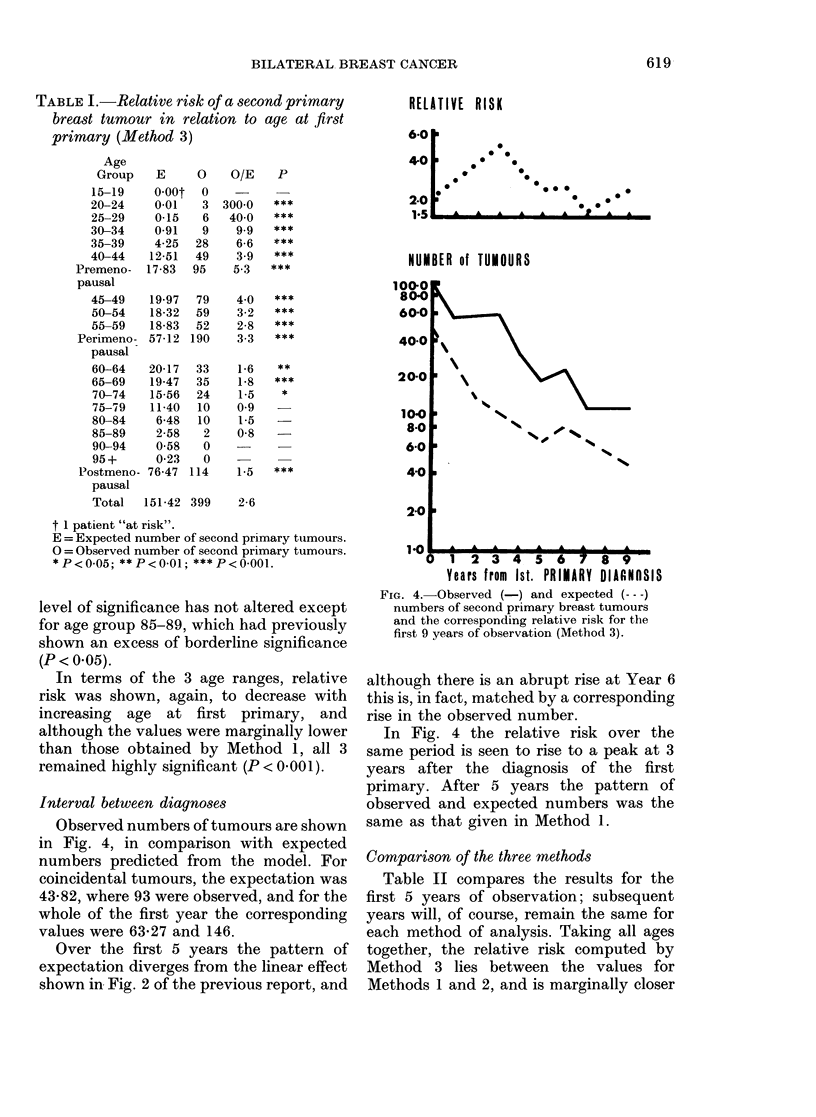
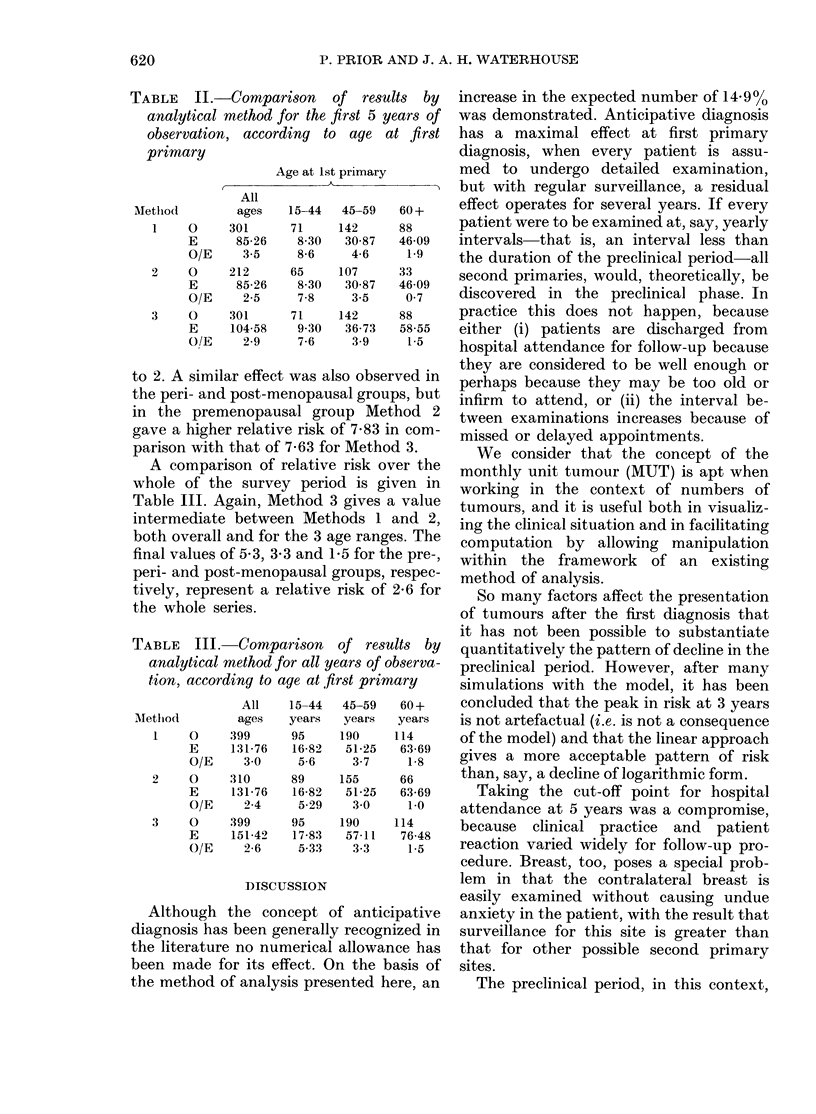
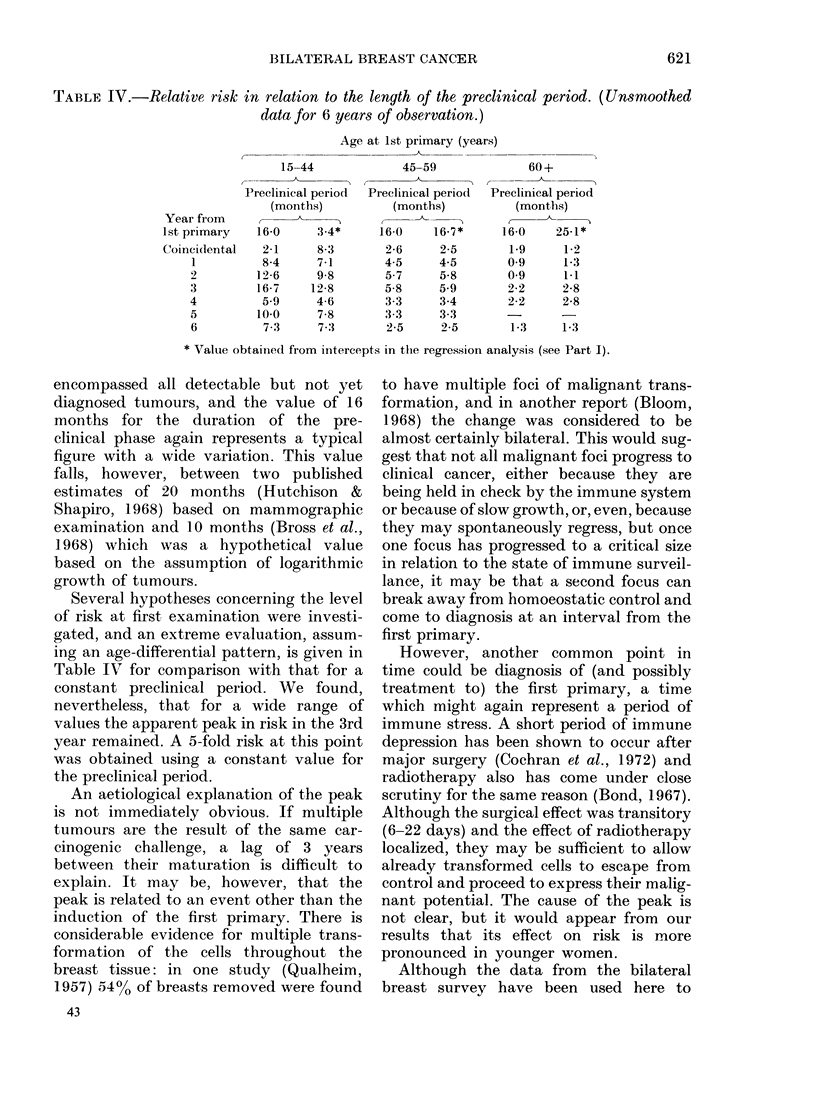
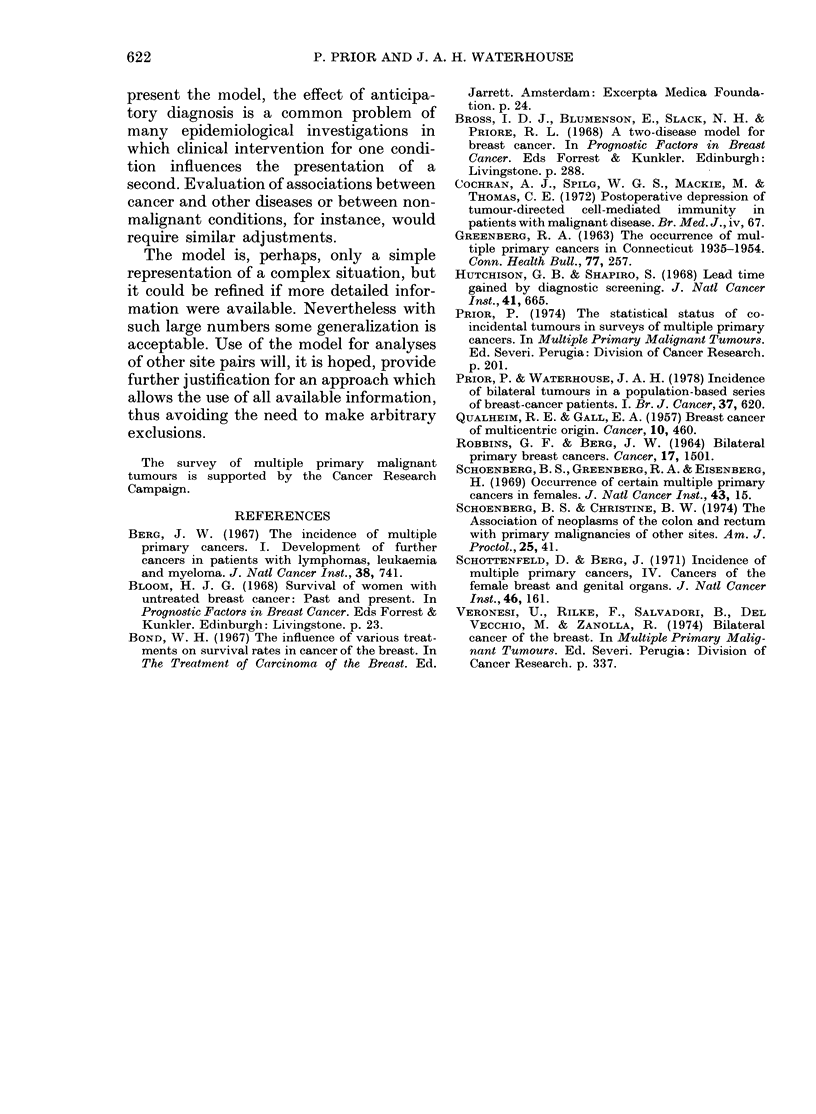
Selected References
These references are in PubMed. This may not be the complete list of references from this article.
- Berg J. W. The incidence of multiple primary cancers. I. Development of further cancers in patients with lymphomas, leukemias, and myeloma. J Natl Cancer Inst. 1967 May;38(5):741–752. [PubMed] [Google Scholar]
- Cochran A. J., Spilg W. G., Mackie R. M., Thomas C. E. Postoperative depression of tumour-directed cell-mediated immunity in patients with malignant disease. Br Med J. 1972 Oct 14;4(5832):67–70. [PMC free article] [PubMed] [Google Scholar]
- Hutchison G. B., Shapiro S. Lead time gained by diagnostic screening for breast cancer. J Natl Cancer Inst. 1968 Sep;41(3):665–681. [PubMed] [Google Scholar]
- Prior P., Waterhouse J. A. Incidence of bilateral tumours in a population-based series of breast-cancer patients. I. Two approaches to an epidemiological analysis. Br J Cancer. 1978 Apr;37(4):620–634. doi: 10.1038/bjc.1978.92. [DOI] [PMC free article] [PubMed] [Google Scholar]
- QUALHEIM R. E., GALL E. A. Breast carcinoma with multiple sites of origin. Cancer. 1957 May-Jun;10(3):460–468. doi: 10.1002/1097-0142(195705/06)10:3<460::aid-cncr2820100307>3.0.co;2-e. [DOI] [PubMed] [Google Scholar]
- ROBBINS G. F., BERG J. W. BILATERAL PRIMARY BREAST CANCER; A PROSPECTIVE CLINICOPATHOLOGICAL STUDY. Cancer. 1964 Dec;17:1501–1527. doi: 10.1002/1097-0142(196412)17:12<1501::aid-cncr2820171202>3.0.co;2-p. [DOI] [PubMed] [Google Scholar]
- Schoenberg B. S., Christine B. W. The association of neoplasms of the colon and rectum with primary malignancies of other sites. Am J Proctol. 1974 Aug;25(4):41–passim. [PubMed] [Google Scholar]
- Schoenberg B. S., Greenberg R. A., Eisenberg H. Occurrence of certain multiple primary cancers in females. J Natl Cancer Inst. 1969 Jul;43(1):15–32. doi: 10.1093/jnci/43.1.15. [DOI] [PubMed] [Google Scholar]
- Schottenfeld D., Berg J. Incidence of miltiple primary cancers. IV. Cancers of the female breast and genital organs. J Natl Cancer Inst. 1971 Jan;46(1):161–170. [PubMed] [Google Scholar]


